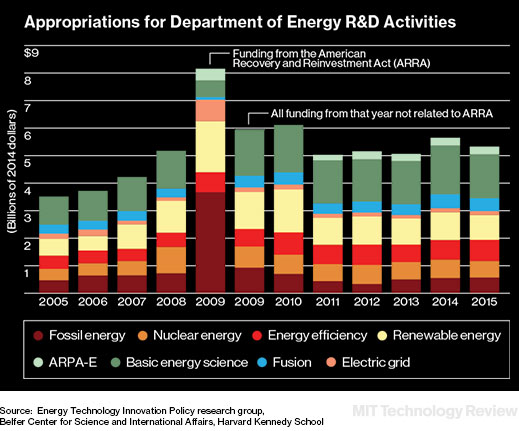Wealthy Investors Target Dramatic Increase in Clean-Energy Funding
Starting off the Paris climate talks with a bang, an international group of investors headed by Bill Gates announced a new funding initiative, called the Breakthrough Energy Coalition, that will invest in clean-energy technologies. The coalition parallels a new government-backed investment program for clean-energy research and development, called Mission Innovation, that was announced by President Obama and French president Francois Hollande in Paris this week.
Including China, France, Germany, India, the United States, and 15 other countries, Mission Innovation will seek to double government funding for clean-energy R&D over the next five years. The Breakthrough group, meanwhile, will bring together 27 prominent investors, including Gates, Amazon founder Jeff Bezos, Facebook’s Mark Zuckerberg, Khosla Ventures founder Vinod Khosla, and billionaire hedge-fund manager turned clean-energy activist Tom Steyer to create a multibillion-dollar fund to bring innovative clean-energy technologies to market.

The need for increased investment is highlighted by the chart above, which shows funding from the U.S. Department of Energy for energy research and development. In 2009, the stimulus package added more than $8 billion in energy research funding—nearly half of it for fossil fuels. Since then research funding has stagnated at around $5 billion a year.
Wedding dramatically increased government funding in basic research on clean-energy technology to private-sector money to bring those technologies to market, the two initiatives could help countries achieve the goal of limiting the rise in global average temperature to 2 °C by 2100—the threshold considered essential to averting the most disastrous effects of climate change.
Keep Reading
Most Popular
Large language models can do jaw-dropping things. But nobody knows exactly why.
And that's a problem. Figuring it out is one of the biggest scientific puzzles of our time and a crucial step towards controlling more powerful future models.
The problem with plug-in hybrids? Their drivers.
Plug-in hybrids are often sold as a transition to EVs, but new data from Europe shows we’re still underestimating the emissions they produce.
Google DeepMind’s new generative model makes Super Mario–like games from scratch
Genie learns how to control games by watching hours and hours of video. It could help train next-gen robots too.
How scientists traced a mysterious covid case back to six toilets
When wastewater surveillance turns into a hunt for a single infected individual, the ethics get tricky.
Stay connected
Get the latest updates from
MIT Technology Review
Discover special offers, top stories, upcoming events, and more.